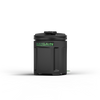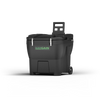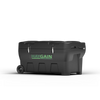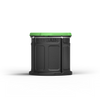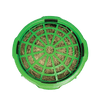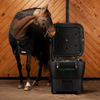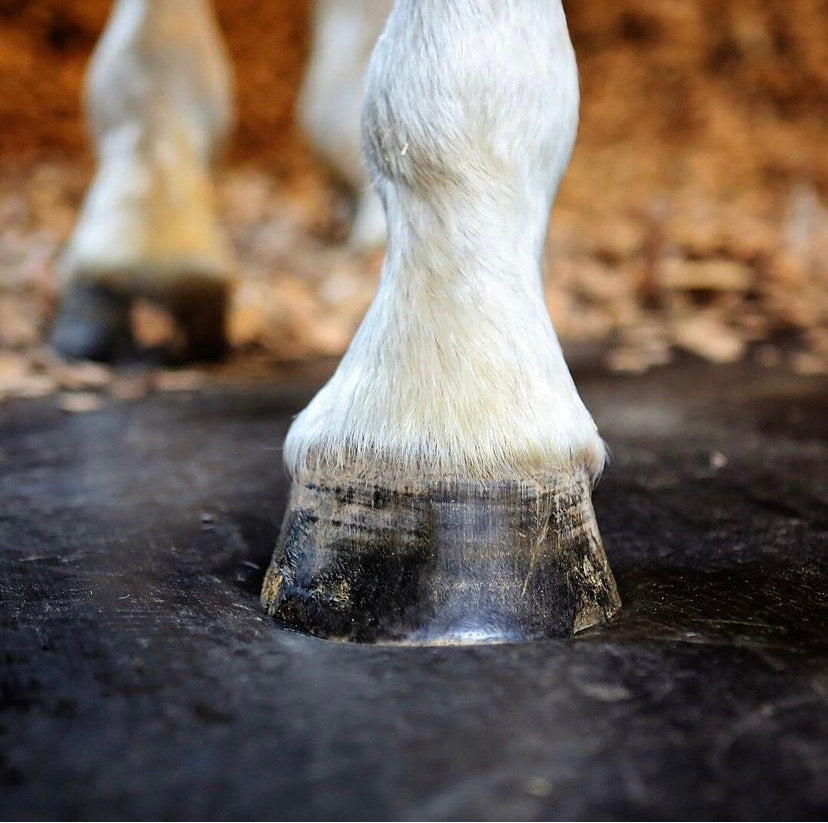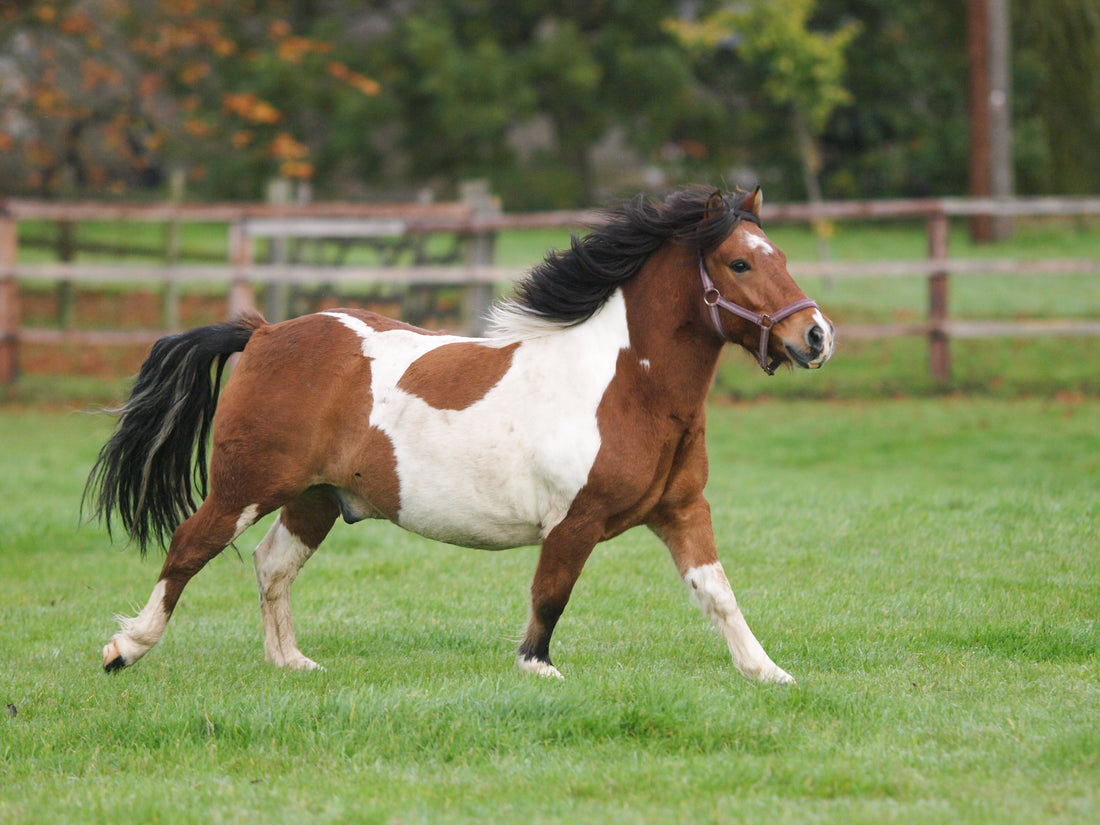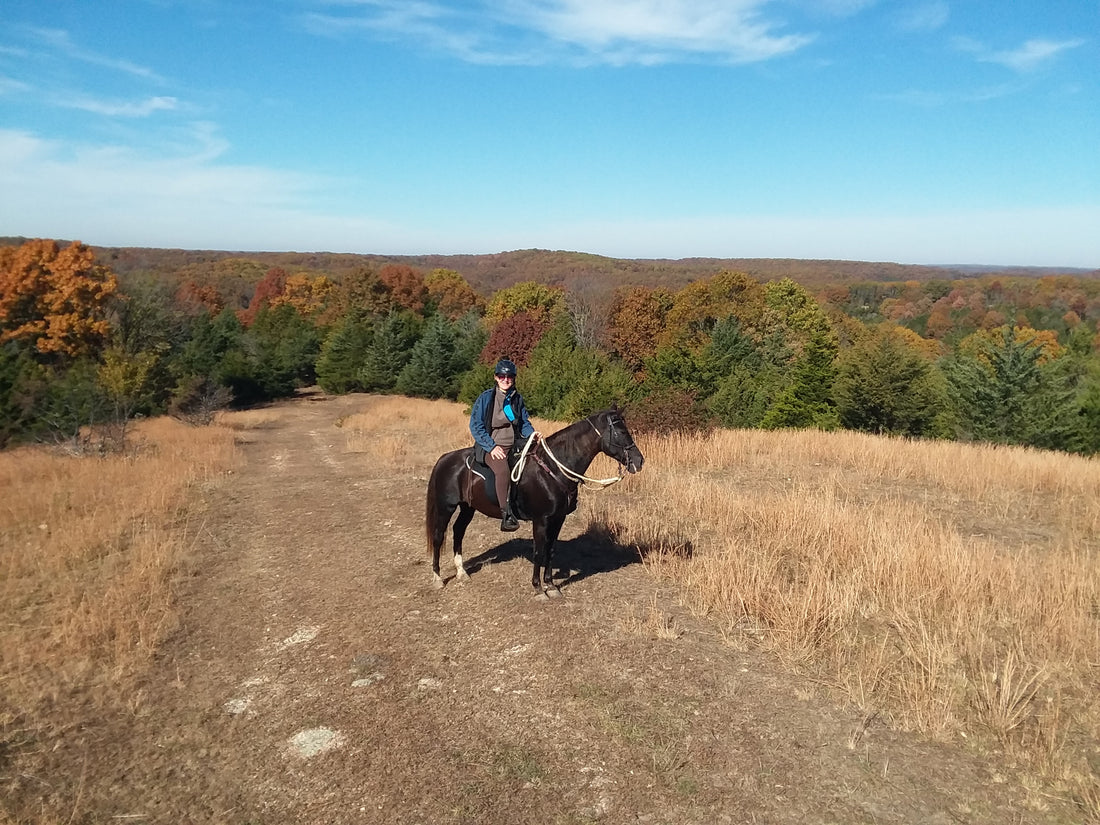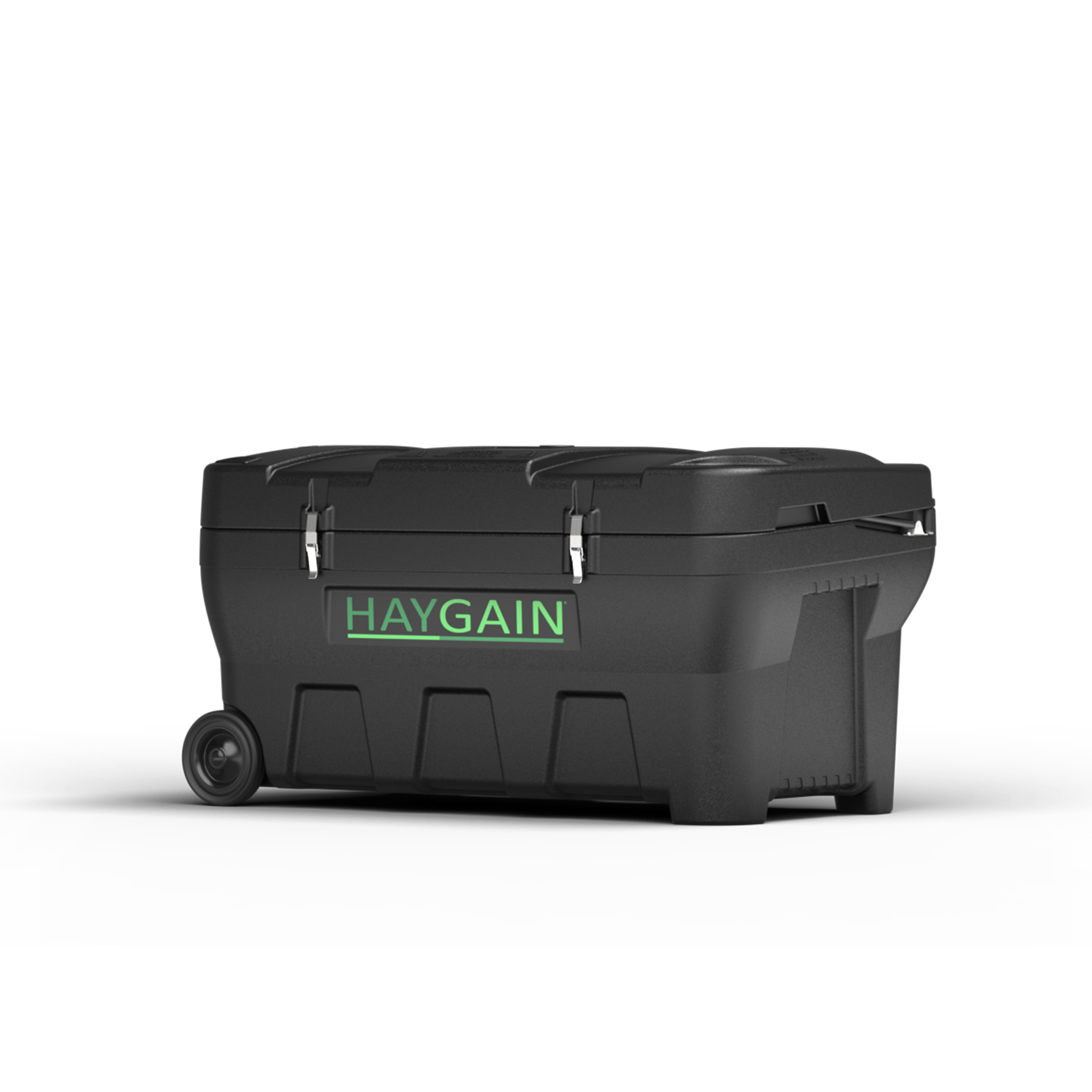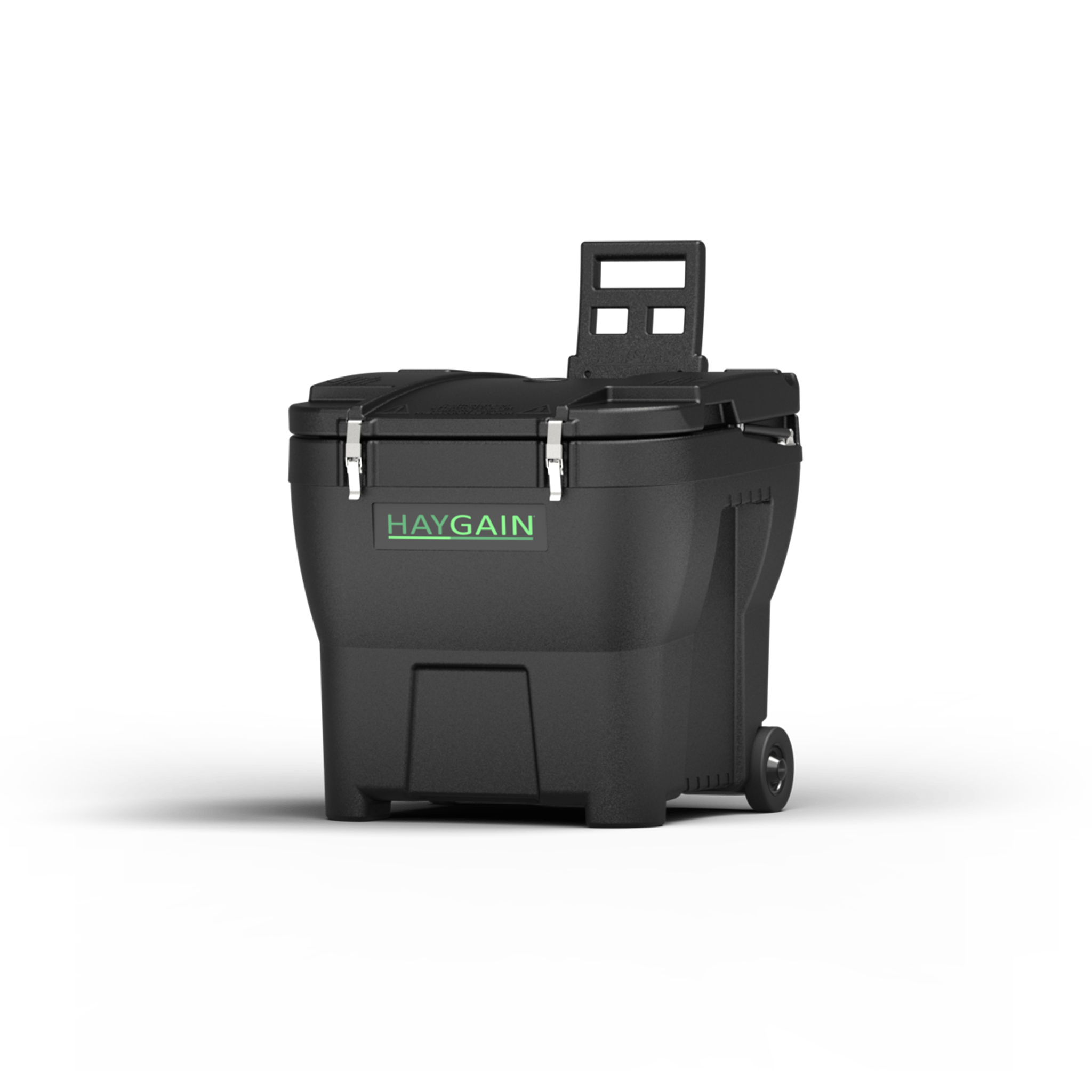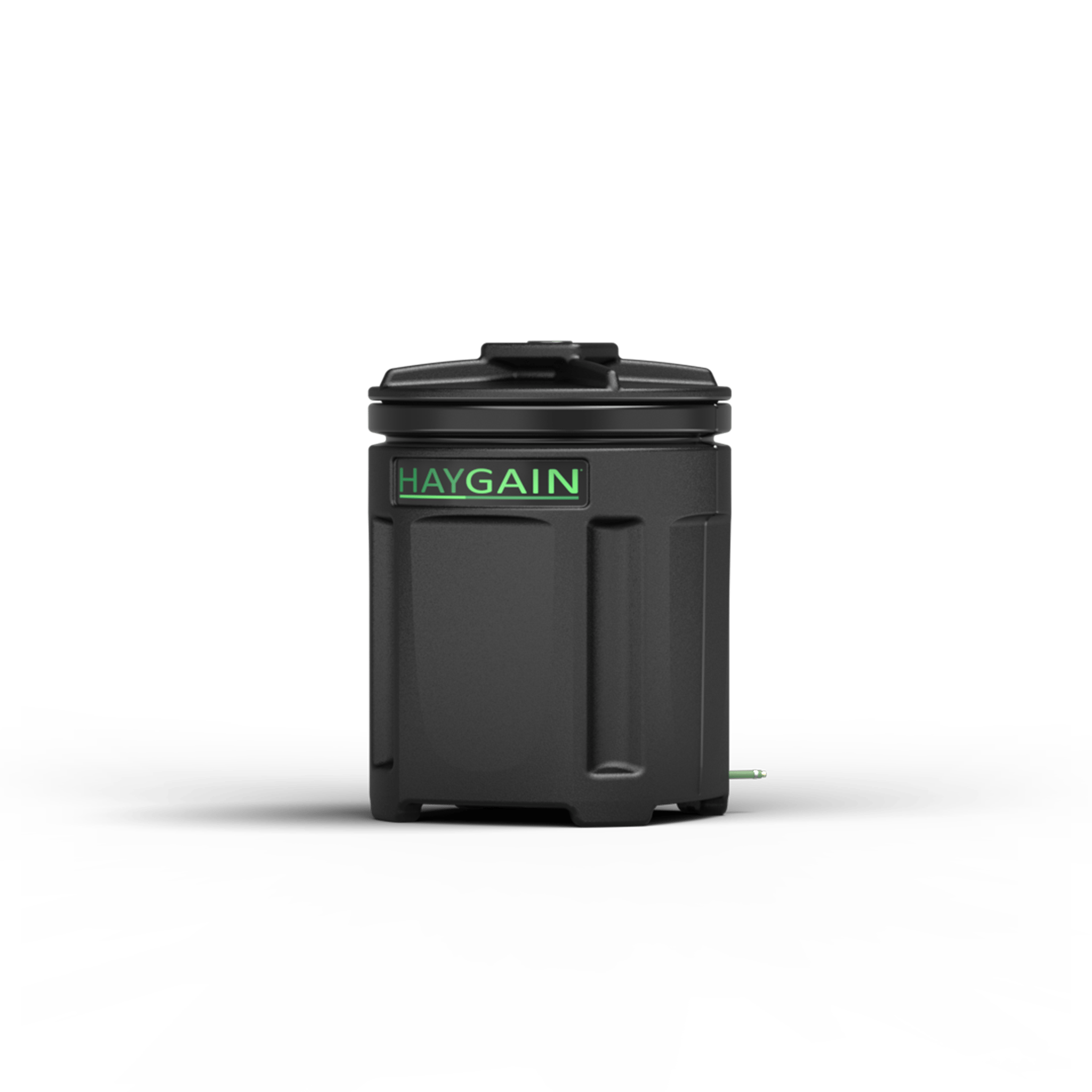April 28, 2021
Preventing Equine Asthma Spectrum Conditions
"Get nosy," advises veterinarian Dr. Wren Burnley.
By Kim Miller | Equestrian Writer
Wren Burnley has a veterinary degree and ongoing education to inform the care of her own horses and those in her practice. She also brings her perspective as an FEI dressage trainer and rider.
When she wants to evaluate her patients' home environments for respiratory risks, however, Dr. Burnley only needs her nose. As in, she'll stick her nose into a bale of hay, bend down in the stall to inhale deeply in the horse's "inhalation zone," or stand in the barn aisle sniffing for ammonia odours. She encourages clients to be equally "nosy" in protecting their horse's respiratory health.
Why?
"Because horse's lungs are at their peak from the get-go," she explains. "You can't make lungs get stronger with exercise." That puts a premium on protecting them, along with the upper respiratory tract that delivers oxygen to the lungs and carries carbon dioxide out.
As the term "Equine Asthma Spectrum" becomes widely accepted in veterinary circles, Dr. Burnley fields increasing inquiries about what it is and how it applies to clients' horses. Here are answers to some of Dr. Burnley's Frequently Asked Questions on the subject.
Q: What is the Equine Asthma Spectrum?
A: It's a broad term introduced a few years ago to align descriptions of the progression of respiratory conditions in horses with those found in people. The spectrum goes from mild conditions that are almost unrecognizable in young sport horses to heaves, which involves heavy breathing, difficulty moving about and a "heave" line on the horse's side from the effort required to exhale.
Inflammatory Airway Disease is a term most people don't know much about. It's at the mild end of the spectrum and often found in younger horses, and with more subtle symptoms. IAD is common: it affects about 80% of our horses. It's the condition that we can do the most about in the life of a horse. IAD is mostly asymptomatic, or the symptoms are so mild we have to be super horse keepers to watch out for them.
Q: What are the IAD symptoms?
A: A cough. Often that sort of throat-clearing cough after the first little bit of warm-up at the walk. By the time even an intermittent cough shows up, there is already inflammation in the airways. Another symptom can be a little bit of clear nasal discharge. Or, even more subtle: Your horse is just "not quite right" in their breathing, but you don't have a clear way of describing that to your vet.
Q: What causes IAD?
A: It is a protective mechanism of the horse's body. The body doesn't want tiny particles going down its respiratory tree. It responds to the irritation of those particles with inflammation, and that causes mucus which is needed to sweep the particles out. But the inflammation and the mucus make it harder for oxygen to travel through the respiratory tract and get to the lungs, and that's when you have IAD.
Compounding this situation is when the particles are allergens for horses. There is increasing recognition of the range of things that can trigger allergic reactions in horses. When present, allergens worsen the response in the form of more inflammation and mucus, making it even harder to get oxygen to the lungs.
Q: How can it be prevented?
A: Decrease the amount of particles in your horse's inhalation zone.
When you are riding your horse, or however your horse lives its day, figure out what is in your horse's environment and his inhalation zone that could be causing the problem. Stick your nose in the same place your horse does! When you walk into your stable, look around and realize that not all horses spend their whole day with their head hanging over the stall door. They have their head down in the stall a lot of the time. Put your head down there and figure out what's happening two to three feet off the ground, where your horse's head is.
I am an asthmatic myself, and I am not happy with what I often find.
Look in your arenas and exercise paddocks. Look at the clouds of dust particles when the light hits them. The horse's nose is big, and it takes in a lot of those particles. That's what gets stuck in the respiratory tree, and sometimes goes further down the tree to the lungs.
Q: Where do most of the particulates come from?
A: Footing. Bedding. Hay
Q: What steps to you recommend for minimizing particulates?
A: Don't blow the barn aisle when your horses are inside. Open the barn doors and windows. Horses aren't made to be closed in. They love light and air. The more air moving through the barn, the better.
Water the arenas as often as needed to keep the dust down.
Q: Most horses benefit from a mainly hay diet. How do you manage that when it's a primary source of these harmful particles?
A: I can break open a bale of hay, stick my nose into it, and it smells sweet and wonderful: not a whiff of mold or mildew. I think my nose is really great, but if I send that hay off to the lab, it will likely come back with mold and bacteria in it.
I steam our horses' hay and recommend that my clients do, too. Allergens, bacteria, and things horses can be allergic to are really gone after high temperature steaming in a Haygain steamer.
Soaking hay is also an option, but that leaches nutrients and soaking can increase the bacteria and fungi in hay.
Q: When are conditions on the Equine Asthma Spectrum reversible, versus manageable?
A: Inflammation can be reversed: scarring is only manageable. The difference depends on how far down the respiratory tree the irritation has occurred and how long it's gone on. There are great ways of reversing inflammation, with nebulizer treatments, medications, etc. But if you don't eliminate the things that are causing it, it is going to cycle back.
Q: What are the most significant veterinary advances around equine respiratory health?
A: On the medical end of things, it is the ability to see the problem by using an endoscope to grade the condition of the airway and to monitor what is affecting the horse. This has allowed us to find affected airways earlier. We can start the treatment process earlier and we have the ability to treat the things that are specific irritants for your horse. Your vet can look in there, take samples and send them off for testing, which is getting better and better.
Q: Is there a correlation between respiratory health and the immune system?
A: There is in the sense that so much enters the horse through the nose, which is the gateway to the respiratory system. (Remember, horses are "obligate nasal breathers." They don't breathe through their mouth.) If the immune system is already responding to an airway irritant, then gets hit with an allergen, it can get very wound up.
For me, if my asthma is kind of on the brink and I get hit with something that is an irritant to me, my throat can close up, I get hives and it feels like there is an elephant on my chest. It's a cascade effect that makes it really difficult to perform as a vet or a dressage rider.
Q: You seem especially passionate about protecting equine respiratory health. If so, why?
A: Many years ago, I had my first ride on an FEI dressage horse, owned by one of our clients. I earned my first USDF silver medal with him. He came home from a show with a respiratory infection. We took him to the "horsepital" and he recovered from the virus and bacteria part of the disease, but his respiratory function never fully recovered.
We were just learning about nebulizers and I went on the war path about decreasing dust in our barn and our veterinary practice. It wasn't until this special horse passed away that we learned about Haygain Hay Steamers. We read all the research and wondered why we hadn't heard about this before. (Haygain was introduced in 2009.)
Since we started steaming, our horses have not had any of the respiratory problems that start in a simple fashion and can get so much worse. We understand the management in a better way and it's all about making the respiratory tree as healthy as possible.
Q: Thank you, Dr. Burnley!
A: My pleasure!
TRENDING ARTICLES
-
BEFORE YOU GO
Get the Haygain Newsletter
Subscribe for the latest news, health advice, special offers and competitions. Fill out the form at the bottom of this page.
